Key Takeaways:
- Regular brushing of a cat's undercoat can prevent matting, reduce shedding, and maintain a healthy coat.
- Using the right tools, such as a self-cleaning slicker brush or a Furminator undercoat deshedding tool, can make grooming more effective.
- Brushing not only benefits the cat's physical health but also provides an opportunity for bonding between the cat and its owner.
Cats are known for their meticulous self-grooming habits, but does that mean they don't need a helping hand from their human companions? When it comes to the health and maintenance of a cat's undercoat, brushing plays a crucial role. In this comprehensive guide, we'll explore why brushing a cat's undercoat is beneficial, the best practices for doing so, and the tools that can help you keep your feline friend's fur in top condition.
The Importance of the Undercoat
The undercoat of a cat is a layer of soft, downy fur that lies beneath the more visible topcoat. This layer plays a significant role in regulating the cat's body temperature and providing insulation. However, without proper care, the undercoat can become a source of problems such as matting and excessive shedding.
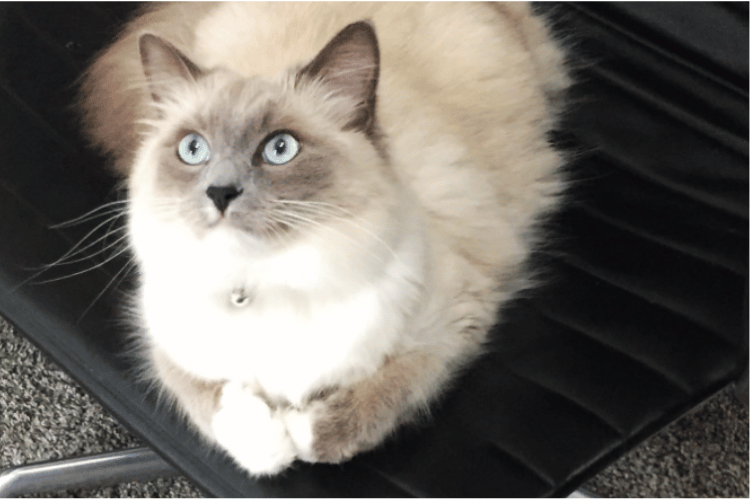
Choosing the Right Grooming Tool
When it comes to grooming a cat's undercoat, the choice of tool is paramount. A self-cleaning slicker brush is often recommended for its ability to remove loose hair while being easy to clean. For cats with particularly thick undercoats, the Furminator undercoat deshedding tool is a popular choice, thanks to its effectiveness in removing dead hair without damaging the healthy topcoat.
The Benefits of Brushing for Long and Short Haired Cats
Long haired cats prone to matting can greatly benefit from regular brushing sessions. Not only does it help in removing loose fur, but it also prevents the formation of matted hair, which can be painful and lead to skin irritation. Short hair cats, while less prone to matting, also benefit from brushing as it helps distribute natural skin oils, promoting a healthy coat.
How Brushing Affects Skin Health
Brushing a cat's undercoat does more than just improve the appearance of their coat. It stimulates blood circulation to the skin, which can promote healthier skin. Additionally, brushing helps to remove skin flakes and reduce the amount of cat dander floating around your home, which is a common allergen for many people.
The Self-Cleaning Mechanism of Cats
Cats are equipped with a unique self-grooming mechanism. The cat's tongue is covered with tiny, hook-like structures that effectively remove dead hair and dirt. However, this doesn't negate the need for brushing, as many cats cannot reach all areas of their body, and as a cat ages, its ability to self-groom may diminish.
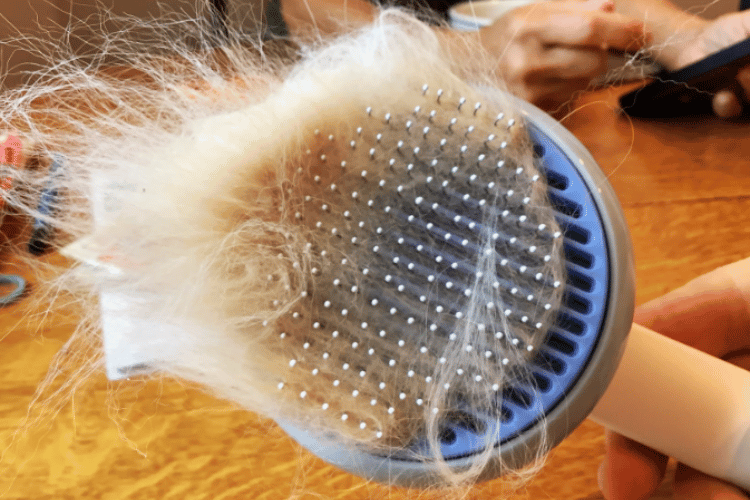
The Perils of Hair Ingestion
As a cat grooms itself, it inevitably swallows some of its own hair, which can lead to the formation of hairballs. Regular brushing helps remove loose hair, reducing the amount of hair a cat swallows during self-grooming. This can prevent the discomfort and potential health issues associated with hairballs.
Brushing as a Bonding Experience
A brushing session can be a wonderful opportunity for bonding with your cat. Many cats enjoy the sensation of being brushed, and it can be a relaxing experience for both the cat and the owner. It's also a chance to check for any signs of skin irritation or other health issues that may not be immediately visible.
Professional Groomer vs. At-Home Care
While some cat owners may prefer to take their pets to a professional groomer, regular at-home brushing can be just as effective and more cost-efficient. It also allows cat owners to keep a closer eye on their cat's skin and coat health, catching potential problems early.
Understanding Different Brush Types
There are several types of brushes available for cat grooming, each with its own set of benefits. A slicker style brush is great for removing loose fur and detangling. A bristle brush, often made with boar bristles, is suitable for finishing and shining the coat. For sensitive cats, a rubber brush can provide a gentler grooming experience.
The Role of Bathing in Coat Care
While cats typically do not require frequent baths, the occasional use of cat shampoo can complement the brushing routine, especially for cats that get into something sticky or dirty. It's important to use a shampoo specifically formulated for cats, as human shampoo can be harsh on a pet's skin.
Recognizing Signs of Discomfort During Brushing
When it comes to the question, "Is brushing a cat's undercoat good?" it's crucial to observe your cat's behavior for any signs of discomfort. Cats are known for their tolerance, but when it comes to grooming, they can be quite sensitive.
If your cat seems agitated or tries to escape, it may be a sign that the brush is too harsh on their skin or that they're not used to the sensation. A cat's skin is delicate, and using a self-cleaning slicker brush can help minimize discomfort by gently removing loose hair without pulling on the skin.
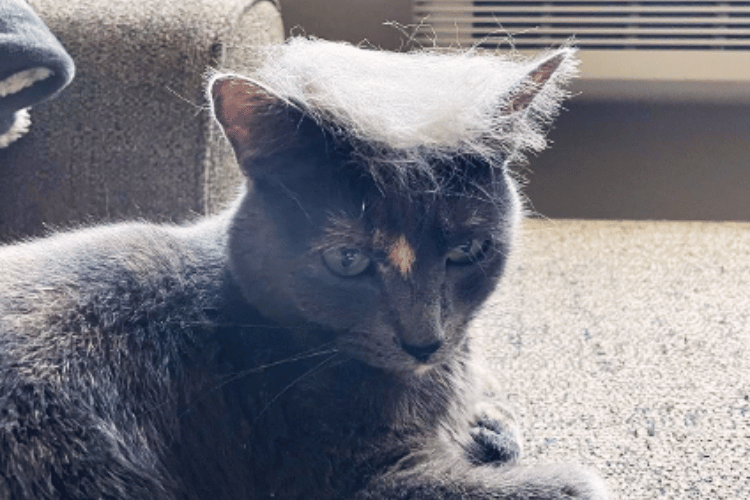
In addition to their reactions, pay attention to the physical signs on your cat's body. Look for any redness, scratches, or signs of irritation on the cat's skin after brushing. If you notice any of these symptoms, it might be time to switch to a softer brush or alter your technique.
Remember, the goal is to keep your kitty's coat healthy and their skin undamaged. Brushing should be a soothing experience for your cat, not a stressful one. By being attentive, you can ensure that grooming remains a positive activity for both you and your pet.
Seasonal Considerations in Grooming
When pondering the question, "Is brushing a cat's undercoat good?" it's essential to consider the seasonal changes that affect a cat's coat. During the spring, as the weather warms up, cats naturally shed their thick winter undercoats.
This is a prime time to increase brushing frequency to help your long-haired cat manage the excess hair. A self-cleaning slicker brush can be particularly effective in removing loose fur without causing discomfort to your cat's skin.
In contrast, as the colder months approach, your cat's body prepares for the drop in temperature by growing a denser undercoat. During this period, regular brushing helps distribute natural oils throughout your cat's coat, ensuring that the fur remains insulating and water-resistant.
For short-haired cats, while the change might not be as pronounced, maintaining a consistent grooming routine is still beneficial to manage the slight increase in shed hair.
Grooming Around Sensitive Areas
When it comes to grooming, certain areas on a cat's body require extra attention and care. The skin around a cat's ears and anus, for instance, is particularly sensitive.
Gentle strokes with a self-cleaning slicker brush can help remove loose fur without causing discomfort. It's crucial to be cautious and observant, ensuring that the cat's skin is not irritated during the process. Regularly removing hair from these areas can prevent matting and maintain hygiene, especially for long-haired cats whose fur can easily become tangled.
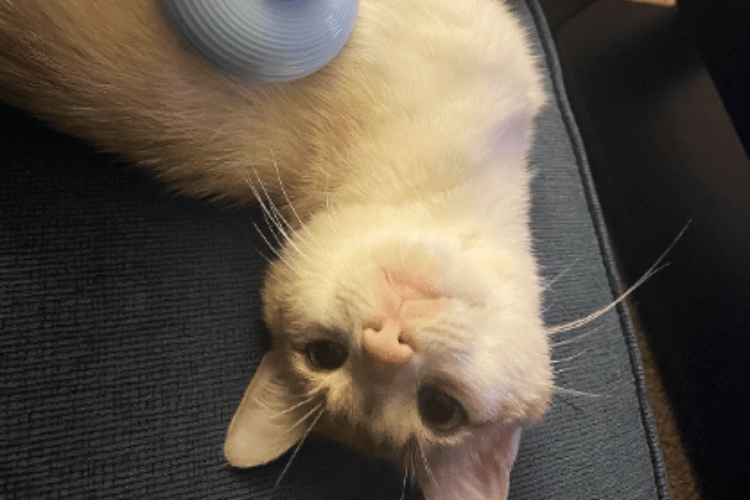
In addition to being mindful of sensitive areas, it's also important to consider the cat's overall comfort. While is brushing a cat's undercoat good for their coat and skin health, it's essential to watch for signs of stress or annoyance.
If a cat shows any discomfort, especially when grooming near the ears or anus, it's best to pause and give them a break. Using tools designed for a cat's body, such as brushes with softer bristles or grooming gloves, can make the experience more pleasant for your feline friend.
Grooming Tools for Different Coat Types
When considering the question, "Is brushing a cat's undercoat good?" it's essential to recognize that different coat types require different grooming tools. For a long-haired cat, a self-cleaning slicker brush can be a game-changer.
These brushes are designed to penetrate deep into the cat's coat without harming the skin, effectively removing loose fur and preventing mats. The self-cleaning feature also makes maintenance a breeze, as it allows for easy removal of accumulated hair with a single click.
In contrast, a short-haired cat might benefit from a softer bristle brush or a fine-toothed comb. These tools are gentler on the cat's skin and are sufficient for the less dense coat of a short-haired breed.
Regardless of the type of brush, it's crucial to choose one that complements your cat's fur type. This ensures that the grooming process is not only beneficial for maintaining the cat's coat but also comfortable for the cat's body, avoiding any unnecessary irritation to the skin.
Grooming Cats with Special Needs
Caring for a cat with special needs may require a modified grooming approach, particularly when it comes to their undercoat. Cats with physical disabilities, sensory impairments, or age-related issues can benefit greatly from gentle brushing sessions.
Using a self-cleaning slicker brush can minimize discomfort while effectively detangling and removing loose fur. This type of brush is designed to be gentle on the cat's skin and coat, which is crucial for cats that might not fully communicate their discomfort.
Moreover, for cats with special needs, regular grooming goes beyond maintaining a healthy coat; it's also an opportunity to inspect the cat's body for any signs of health issues.
While brushing, pay close attention to the cat's skin, ears, and anus, as these areas can be indicators of underlying problems. Gentle strokes allow you to feel for any lumps, bumps, or wounds that may require veterinary attention, ensuring that your kitty's coat and overall health are taken care of.
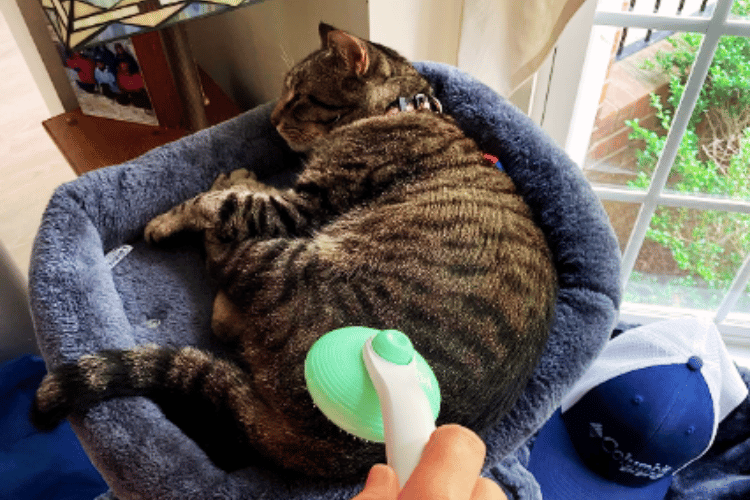
The Science Behind Cat Grooming Behavior
Cats are renowned for their self-grooming habits, which are not only about cleanliness but also serve several physiological and psychological purposes. When a cat licks its fur, the barbs on its tongue act like a natural comb, helping to spread natural oils across the cat's coat, which waterproofs and maintains the insulating properties of the fur. This self-grooming behavior also helps regulate a cat's body temperature and can be a soothing activity that reduces stress.
However, even with their meticulous self-grooming routines, cats can still benefit from human intervention, especially long haired cats that are prone to tangles and mats.
Brushing a cat's undercoat supports their natural grooming habits by removing excess hair, which reduces hairballs and can contribute to a shinier, healthier coat. Additionally, brushing can help distribute skin oils more evenly throughout the cat's fur, enhancing the self-cleaning properties and overall appearance of the kitty's coat.
The Significance of Grooming Post-Bathing
Bathing a cat is not as common as bathing a dog, but when it does happen, it presents a unique opportunity for grooming. After a bath, a cat's hair is typically softer and easier to work with, making it an ideal time to brush out any tangles or loose hair.
This can be particularly helpful for cats that are not fond of self-grooming or have difficulty reaching certain areas of their body. Using a brush post-bath can help remove any debris or loose fur that the water has loosened but not fully washed away.
Moreover, the act of brushing after a bath can help distribute the cat's natural oils throughout their coat, leaving it shiny and healthy-looking. It's also a chance to inspect the cat's skin for any issues such as dryness, cuts, or parasites that might have been obscured by the cat's fur. Pay special attention to sensitive areas like the cat's ears and around the cat's anus to prevent any discomfort. Remember, while the kitty's coat might be the focus, the health of the pet's skin is equally important.
Incorporating Grooming into Routine Check-Ups
Grooming isn't just about keeping a cat's coat shiny; it's also an opportunity to monitor their health. As you brush your cat regularly, it's a good time to check for any lumps, bumps, or skin irregularities. This hands-on approach allows pet owners to detect early signs of potential health issues. For instance, while grooming, one might notice changes in a cat's skin or the texture of their fur, which could indicate nutritional deficiencies or health problems.
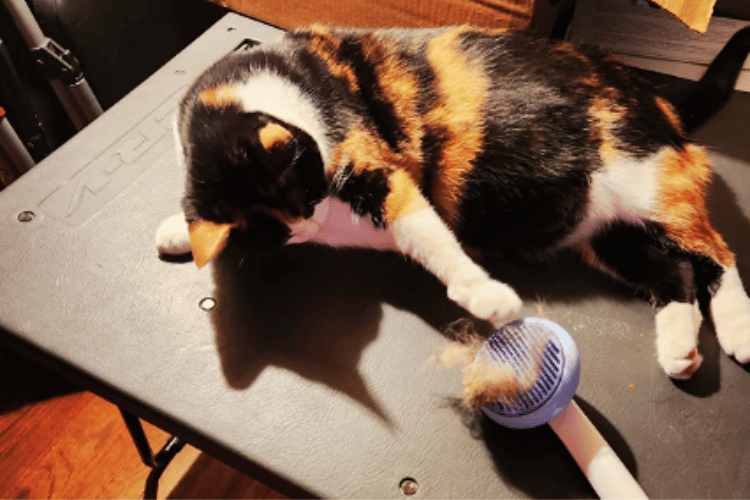
Moreover, as you become familiar with your cat's body through regular grooming, you'll be better equipped to notice any unusual changes. For example, while brushing your cat's fur, you might find ticks or fleas, which are easier to spot and remove on a well-groomed coat.
Paying attention to the condition of your pet's skin, the cleanliness of their coat, and even the state of their ears can provide valuable insights into their overall well-being. Thus, integrating grooming into routine health check-ups can be a proactive step in maintaining your kitty's coat and health.
Grooming and Cat Health Monitoring
Regular grooming sessions with the right cat brush not only contribute to a healthy and shiny coat but also provide an opportunity to monitor your cat's health. As you brush your cat's fur, pay close attention to the condition of your pet's skin. Look for any signs of irritation, lumps, or parasites that could indicate health issues. The act of brushing can help in early detection of potential problems, prompting timely veterinary care.
Moreover, while focusing on your cat's coat, don't neglect areas like the cat's ears and the region around the cat's anus. These spots can harbor dirt and bacteria, leading to infections if not kept clean.
Gentle brushing around these sensitive areas, combined with regular checks, ensures that your kitty's coat and body remain in top condition. Remember, a cat's self-grooming habits, such as using their tongue to lick their fur, can't reach every spot, so your role in their grooming process is vital.
Adapting Grooming Techniques for Different Cat Breeds
Different cat breeds have varying grooming needs, and as a cat owner, it's essential to adapt your techniques accordingly. Long haired cats, for example, require more frequent brushing to prevent tangles and mats in their luxurious coats.
A brush that's designed for long-haired breeds can navigate through their soft hairs effectively, removing excess fur and preventing hairballs. On the other hand, short haired cats might not need as much attention, but regular brushing will still contribute to a shiny coat and healthy skin.
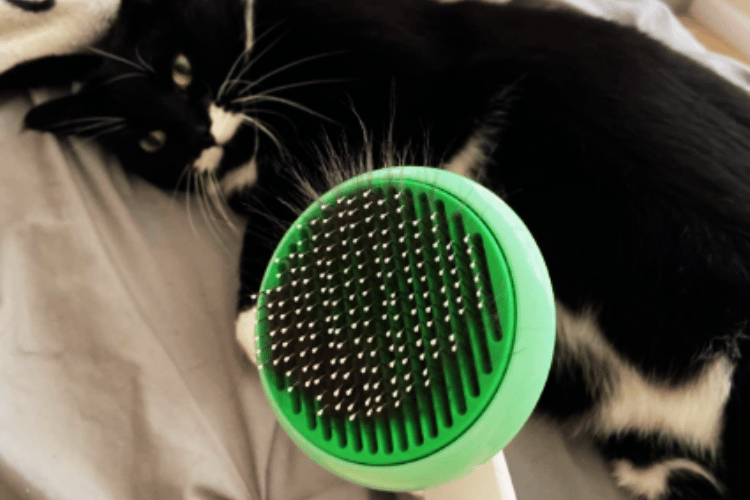
Hairless Sphinx cats present a unique challenge; they lack a coat to brush but still require regular grooming to remove the oils that build up on their skin. For these cats, a gentle bath might be more appropriate than brushing. Regardless of the breed, always be gentle around sensitive areas such as the cat's ears, eyes, and anus.
The best cat brushes are those that cater to the specific needs of your pet's breed, ensuring that grooming is a comfortable and effective process. By customizing your approach, you can maintain your cat's coat and skin in top condition, making brushing a beneficial part of their routine.
Managing Shedding in Indoor Cats
Indoor cats shed just like their outdoor counterparts, and without the natural triggers of changing seasons, they may shed year-round. Regular brushing helps manage this shedding by removing dead hair before it ends up on your furniture and clothing.
The Right Way to Brush a Cat's Undercoat
When brushing a cat's undercoat, it's important to be gentle and methodical. Start at the head and work your way down the cat's body, being careful around sensitive areas like the cat's ears and anus. Use a brush head that's appropriate for your cat's fur type and be mindful of applying too much pressure, which can cause discomfort.
Dealing with Matted Fur
Matted fur can be a challenge, but with patience and the right grooming tool, it can be addressed. A slicker brush or a comb with stainless steel teeth can help tease out mats. In severe cases, it may be necessary to seek the help of a professional groomer to avoid hurting the cat.
The Frequency of Grooming Sessions
The frequency of grooming sessions will depend on the cat's coat type and individual needs. Long hair cats may require daily brushing to prevent mats, while short hair cats might only need brushing a few times a week. Observing how much hair your cat sheds can help you determine the right grooming schedule.
Selecting a Brush with the Right Features
When shopping for a grooming tool, look for features that will make the experience easier for both you and your cat. A fur ejector button, found on tools like the Furminator, can be a convenient way to remove collected fur from the brush. Brushes with adjustable brush heads can accommodate cats of different sizes and coat types.
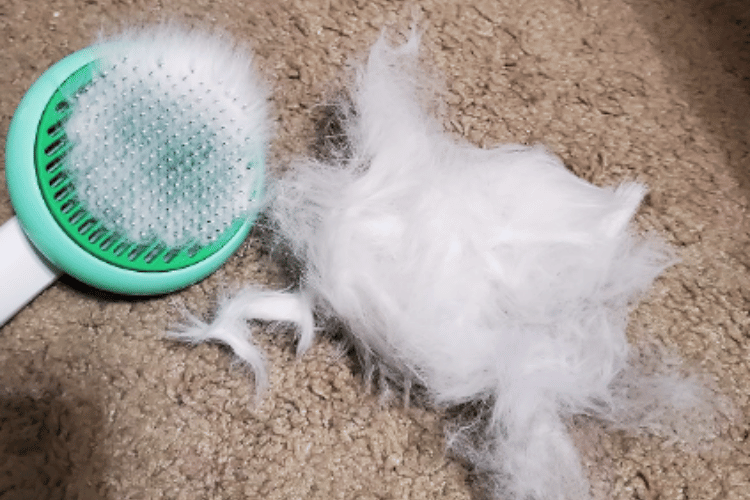
The Impact of Diet on Coat Health
A cat's diet plays a significant role in the health of its coat. Foods rich in omega-3 and omega-6 fatty acids can promote a shiny, healthy coat. Ensuring your cat has a balanced diet can make your brushing efforts even more effective.
Handling Sensitive Cats During Grooming
Sensitive cats may be apprehensive about grooming sessions. It's important to create a calm environment and to introduce the grooming tool slowly. A soft brush or a pin brush with rounded ends can be less intimidating for a cat that's not used to being brushed.
The Evolution of Cat Grooming Tools
Grooming tools have evolved significantly over the years. Innovations like the rubber brush, which can mimic the feel of a cat's tongue, have made grooming a more pleasant experience for cats. Keeping up with new grooming tool options can help you find the best fit for your cat's needs.
The Risks of Over-Brushing
While regular brushing is beneficial, over-brushing can lead to skin irritation and damage to the coat. It's important to monitor your cat's reaction to brushing and adjust the frequency and duration of grooming sessions accordingly.
The Role of Grooming in Overall Cat Health
Grooming is not just about keeping a cat's coat looking good; it's an essential part of maintaining overall health. A well-groomed cat is less likely to suffer from skin issues, and the act of grooming can help detect early signs of health problems.
Summary
Brushing a cat's undercoat is an essential aspect of pet care that offers numerous benefits for both the cat and the owner. It helps prevent matting, reduces shedding, distributes natural oils, and can even enhance the bond between you and your feline friend. By choosing the right grooming tool and establishing a regular brushing routine, you can ensure your cat's coat and skin remain healthy and beautiful.
FAQ Section
How often should I brush my cat's undercoat?
The frequency of brushing depends on your cat's breed, coat length, and individual shedding patterns. Long haired cats prone to matting may require daily brushing, while short hair cats might only need it a few times a week.
Can brushing a cat's undercoat help with allergies?
Yes, regular brushing can reduce the amount of cat dander and loose hairs in your home, which are common allergens for many people.
What type of brush is best for a cat's undercoat?
A self-cleaning slicker brush is often recommended for its ability to effectively remove loose hair and for easy cleaning. For cats with thick undercoats, a tool like the Furminator undercoat deshedding tool can be very effective. Always choose a brush that is appropriate for your cat's specific coat type.
Thank you for visiting LegitLists we hope this helps you make a legitimate choice!






